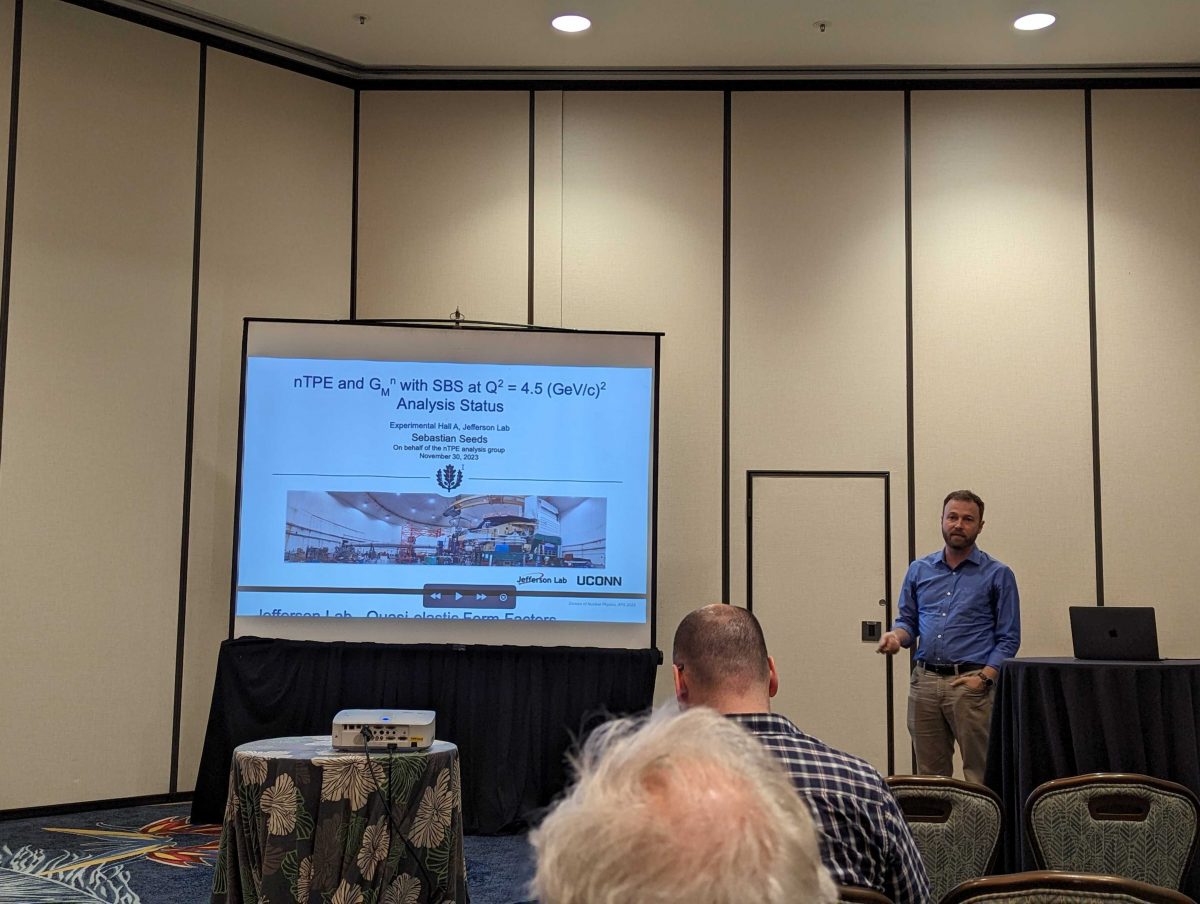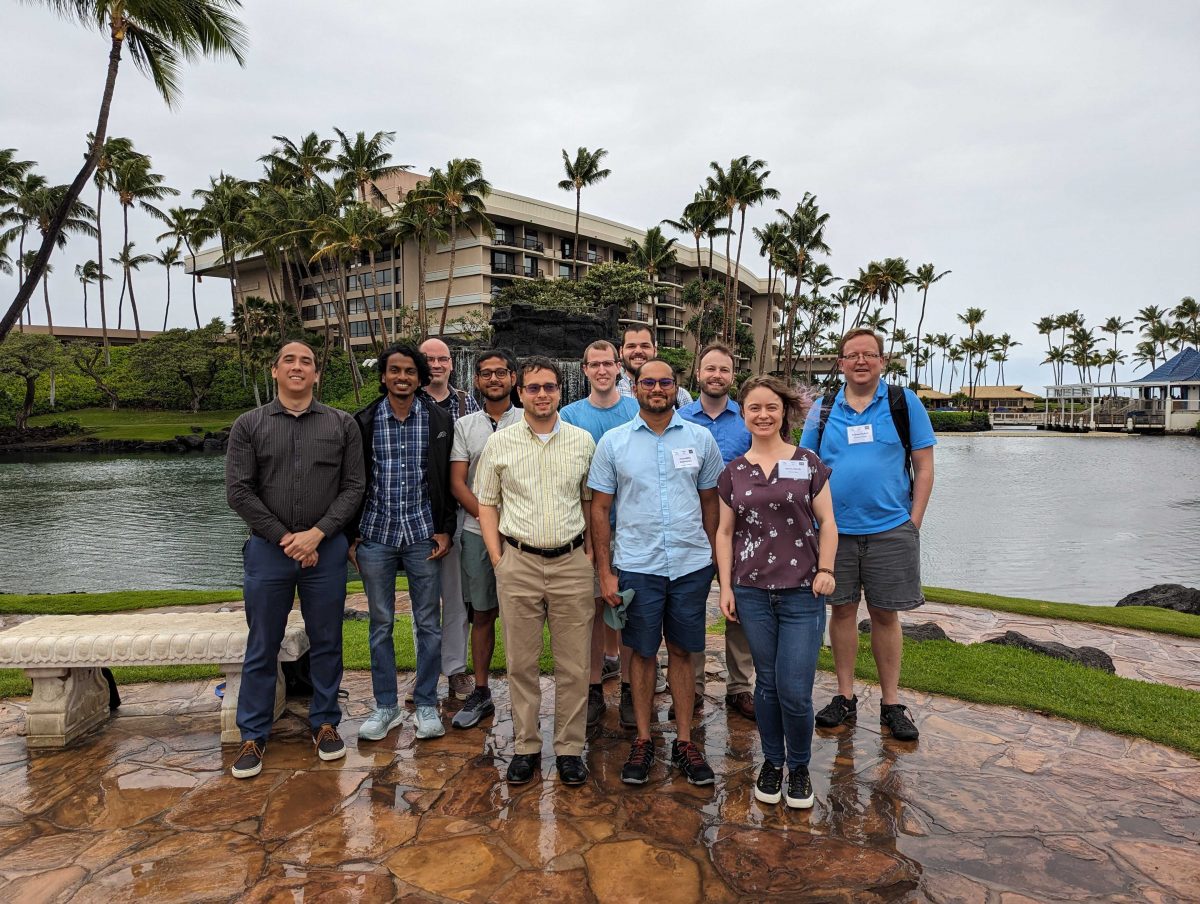Former UConn graduate student Provakar Datta’s Ph.D. thesis was selected for the annual JSA/Jefferson Lab Thesis Prize, which included a cash prize, a plaque, and an invitation to present his research at the annual Jefferson Lab Users’ Organization Meeting (JLUO), that took place from June 24-26, 2025. This prestigious award recognizes the best Ph.D. thesis on research conducted at Jefferson Lab over the previous year, as determined by an expert committee who judged the quality of the written thesis, the importance of the results, the originality of the approach, mastery of the subject, and the contribution of the student to the research.
Link to the self-published, citeable thesis on INSPIRE.
Jefferson Lab’s Recent News Release on the award.














